Vol. 7 Issue 1 Page No. 62-69
Research article
R K Chouhan1, A K Bansal2and R C Chhipa1
1Department of chemistry Suresh Gyan Vihar University, Jaipur, India
2Department of chemistry Agrawal College Jaipur
Abstract
Water is occurred as a natural resource in the universe. Water play a important role for the various functions in the environmentally friendly organisms, human health, for the production of food and economic development. The parameters of drinking water are of very important for the health purpose. The parameters of drinking water are contaminated, by various chemical and microbiological pollutants. This contaminated water may cause severe health problems.
The need for Kota’s drinking water is mainly addressed by surface and ground water supplies, which are both important for domestic, industrial and farm purposes. And so it is because of the nearby Chambal River the value of quality versus quantity.
The consistency of drinking water is low because of these pollutants. Often such low water quality causes many diseases in humans so that both chemical and microbial pollutants have to be screened for the consistency of the water. During the study, it was determined, according to WHO (1971) and BIS (1991), that the maximum number of physical and chemical parameters is within the desired limit.
Keywords
Physio-chemical
Physio-chemical parameters
Water
Water quality standards
*Corresponding author’s e-mail addresses: moinsarmad@gmail.com
Received: 11 July 2020; Accepted: 09 Nov 2020; Published: 25 Jan 2021
Introduction
Water is one of the largest and most available ecosystem compounds. For their survival and development, every living organism on the earth requires water. The world has now just 70% of the water on Earth. But because of the increased human population , industrialization, fertilizer use in agriculture and human activity, various dangerous substances are highly contaminated.
Water pollution is calculated by the measurement of water physiochemical parameters. Physico-chemical analysis is primarily a matter of evaluating water quality for best use, such as drinking, irrigation, fishing and industrial use and of understanding complex processes, the interaction of climate and biological water processes.
Water is largely used and most important natural resources in the world. For the human being as well as all the living organisms, production, human health and for the economic growth, water plays a important role. The safety is necessary for the healthy use of drinking water. Various contaminants including chemical and microbiological contaminants impact on the standard parameters of drinking water. The consistency of drinking water is poor because of these contaminants. These poor water qualities can also contribute too many human diseases, and both chemical and microbial pollutants must be checked for water quality.
Water forms the basis of life and is a vital part of urbanization, economic growth and farming. Natural and run-off, agricultural, industrial and residential waste can be sources of pollution. Wetlands cover the major part of the earth. On the basis of current and stratification, fresh waters can be divided as standing waters and running waters1. Freshwater aquatic systems sequester a good amount of global carbon through carbon cycle. Greatest values of ecosystem goods and services per unit area of all habitats have been assigned to freshwater aquatic ecosystems.
Comparisons with the World Health Organization and the Indian Institute of Standards for geochemical outcomes of beverage water indicate that most ground water samples do not meet the specifications of drinking water quality. Test analyzes before and after the Pre monsoon show major changes as well. The study shows that groundwater quality changes in the post-monsoon cycle can be attributed to groundwater intrusion and drainage. Therefore the safety and appropriateness of groundwater is a priority in the near future.
The contaminants affect our lives and the current pollution rate; we don’t get drinkable water in accordance with established standards. Recent researches in different parts of Rajasthan have also shown the impacts on water quality.Daily monitoring are also time-consuming to monitor groundwater status and assess the contaminants. In view of this, the spatial distribution maps were created using the geographical information system (GIS) to measure water quality parameters. The distribution maps provide an overview of the ecological state of groundwater systems and define the quality requirements for surface water in future areas to be targeted at water treatments.
Study Area
Kota is a educational city of Rajasthan and is situated in the southern part of the state, along the east bank of the Chambal River. It is 271 meters high in average. The field is north-west and north-western bound. The Chambal River makes the natural border between the districts of Sawai Madhopur, Tonk and Bundi, and the district of Kota. Total area of 10 sq (Kms.) covered DCM industrial area and its western area of the Kota region. The details of various spots selected for study are given in Map 1.
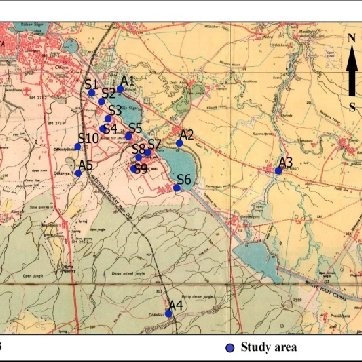
Map 1: Location map of Study area, Kota
The Kishore Sagar Talab small lake in Kota is an artificial lake founded in 1946 by Prince Dher of Bundi. Located at 24 ° 25.675 “N latitude and at 76 ° 37,348” E longitude in the middle of the city, this apartment is very quiet. It has a beautiful seven wonders on one side and talab ki paal on the other side (Fig . 1).
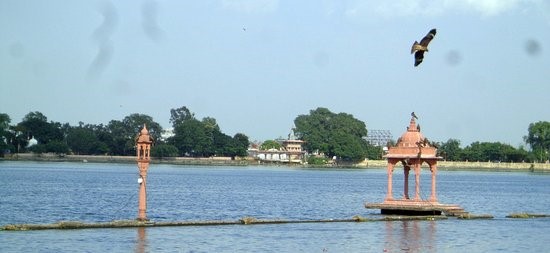
Figure 1. View of Kishore Sagar Lake showing Jagmandir in the centre
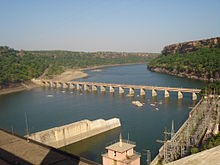
Figure 2.Jawahar Sagar Dam constructed on lake
A whole round the lake is possible on the road. In the center of the lake, Jagmandir was built for entertainment by the Queen of Kota back in 1745. It can be reached by sea. A lake barrier, 1500 m long and 5.6 m high, is built (Fig . 2) and used for water distribution during Kharif and Rabi seasons, through the Rajasthan and Madhya Pradesh waterways.
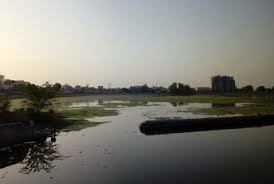
Figure 3. Inlet point with showing human interference
The lake has daily water entry and exit from the Chambal River (Fig . 3). The talab’s rectangular shape is almost irregular. Water is used primarily for irrigation and leisure purposes. Since 2013, the lake was refurbished to preserve water levels so as not to fill the lake with green weeds, not to become an open field for livestock grazing, as it was in twelve years in 2005.Ganesh chaturthi and navratri, which adds contamination through organic matter and chemicals are also submerged in deity idols each year. One of the causes of pollution is anthropogenic activity.
Material and Methods
Over a total duration of 12 months, the sampling frequency was retained monthly (from January 2018 to December 2018). A plastic bucket was used to collect water samples from the station (Plate 1). Normal methods such as APHA (1989) have been used for collecting and analyzing the following water quality parameters.Needham and Needham (1962) were used for qualitative study of macroinvertebrates. However, individual species wise in the whale samples or sub-samples are counted for quantitative analyzes. It was calculated as follows the number of the benthos for each area.
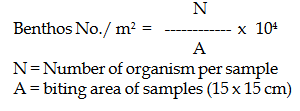
Result and Discussion
For water sample collected from the Chambal river, physical-chemical parameters such as pH, electrical conductivity, alkalinity, dissolved oxygen, total solid dissolving, calcium , magnesium, chloride, biological oxygen demand, nitrate and maximum water hardness were analyzed.
The defined limits for the discharge of sewage / domestic and industrial wastewater into internal surface water bodies after adequate treatment in accordance with Indian standards are shown in Table 1 and Table 2, Physio-chemical Parameters.
Table 1:Sewage effluent disposal inland water resistance limits (IS: 4764-1973)

Table 2: Plant effluents deposited in domestic surface water tolerance cap (IS: 2490-1981)
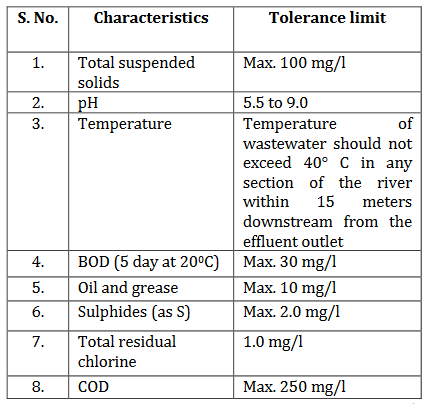
Three months of sample selection and processing is done. The accompanying Table 3 shows the cumulative outcomes and comparisons. The most important parameters analyzed for the waste water samples obtained from the above listed areas of Table 1. are pH , temperature, dissolved oxygen, the biochemical oxygen demand, chemical oxygen demand and the complete dissolved solids.
Table 3: Wastewater Analysis Physical and Chemical Specifications
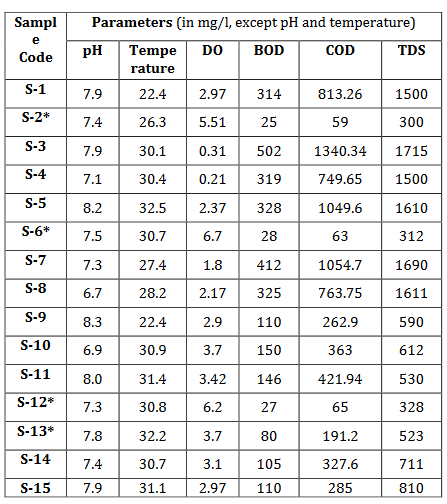
It displays the water samples from the Chambal River in Kota City.
Conclusion
This study showed a lack of an adequate treatment and drainage system in Kota which leads home, industry and so on to the life line of the city of Chambal. The sewage lines are extremely necessary for transport to the wastewater treatment plant (STP) via the city’s sewages networks. This analysis also highlights the fact that, according to IS 4764:1973 and IS 2490:1981, the parameters BOD, COD and TDS of all samples from different locations alarmingly exceed the limits stated. Water-based plants and animals can suffer heavy damage by exceeding their respective limits.
References
Anil Kumar Saini, Alka, Yogesh Kumar Gupta “Water Quality Analysis of Singhana in Buhana Tehsil of Jhunjhunu District (Rajasthan)” International Journal of Renewable Energy Exchange (Rex Journal) Vol. 4 Issue 03, pp 265-267, 2017.
Babita Kumari, Y.K. Gupta, “A detailed report of ground water quality in Jhunjhunu district of Rajasthan, India focus on fluoride.” Asian J. of research in Chemistry, Vol. 08, issue 11, pp 701-707, 2015.
Devangee shukla*, Kinjal Bhadresha , Dr.N. K. Jain , Dr.H. A. Modi, “Physicochemical Analysis of Water from Various Sources and Their Comparative Studies” IOSR Journal Of Environmental Science, Toxicology And Food Technology (IOSR-JESTFT)e-ISSN: 2319-2402,p-ISSN: 2319-2399.Volume 5, Issue 3 (Jul. -Aug. 2013), PP 89-92
Hussain, S. Sharma, R.K., Dasgupta, N. and Raha, A. Assessment of minimum water flow requirement of Chambal River in the context of gharial and Gangetic Dolphin conservation. www.wii.gov.in wild life institute of India, 2011.
Kumar A, Sharma LL and Aery NC 2008, Physicochemical Characteristics and Diatom as Indicators of Trophic Status of Kishore Sagar, Rajasthan. Proceedings of Taal 2007: The 12thWorld Lake Conference, 1804-1809.
Nupur Jain et.al.,“ Analysis of water quality parameters in west India by GIS Modeling Technique” IJERD, Vol. 11, (11), pp 25-32, December 2015.
R Jain, A K Bansal, R Sharma. Physico-Chemical analysis of Dravyavati River of Jaipur. International Journal of Chemical Science and Technology Volume 6‐Issue 4, Oct 2016.Pp.476-480.
- jain, N S. Chauhan, J. Anuradh2, R Sharma, A K. Bansal S Tripathi and R. Sanjeevi., “Evaluation of water quality of a reservoir in Sanganer (Pink city) Rajasthan.” Journal of Chemistry and Chemical Sciences, Vol.6 (11), 1137-1142, November 2016.
- K Chouhan, R. K Yadav, P. Parashar, A K Bansal, R C Chhipa “Analysis of chemical parameters of water in Kota, Rajasthan International Journal of Innovations in Engineering and Technology (IJIET) Volume 11 Issue 2 September 2018
Rajeev Kumar Chauhan, Anil K. Bansa, Puneet K. Parashar, R. C. Chhipa, Microbiological assessment of various Point of Chambal River in Kota district, Rajasthan, India. International Journal of Engineering, Applied and Management Sciences Paradigms Volume 54 Issue 4 July 2019.
